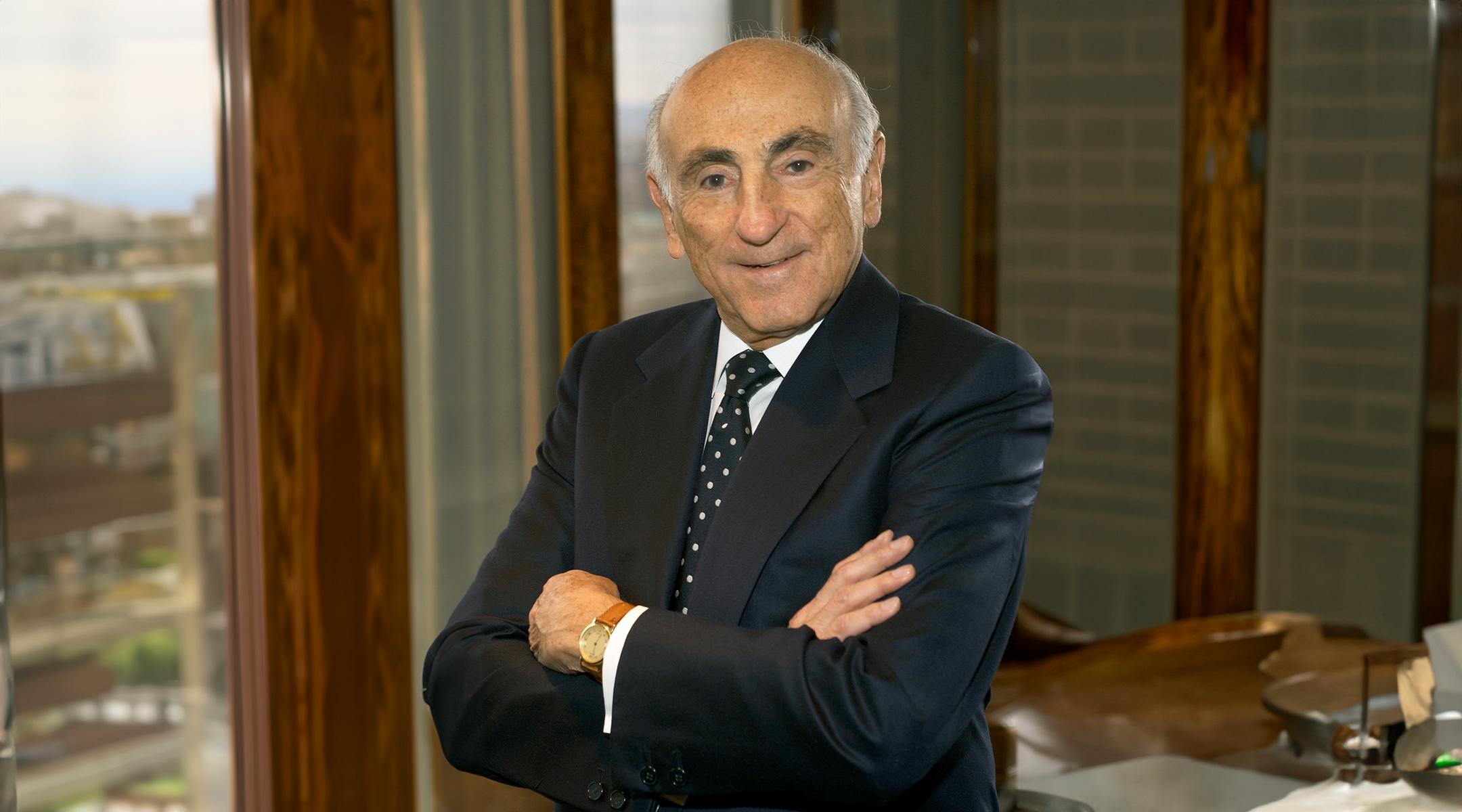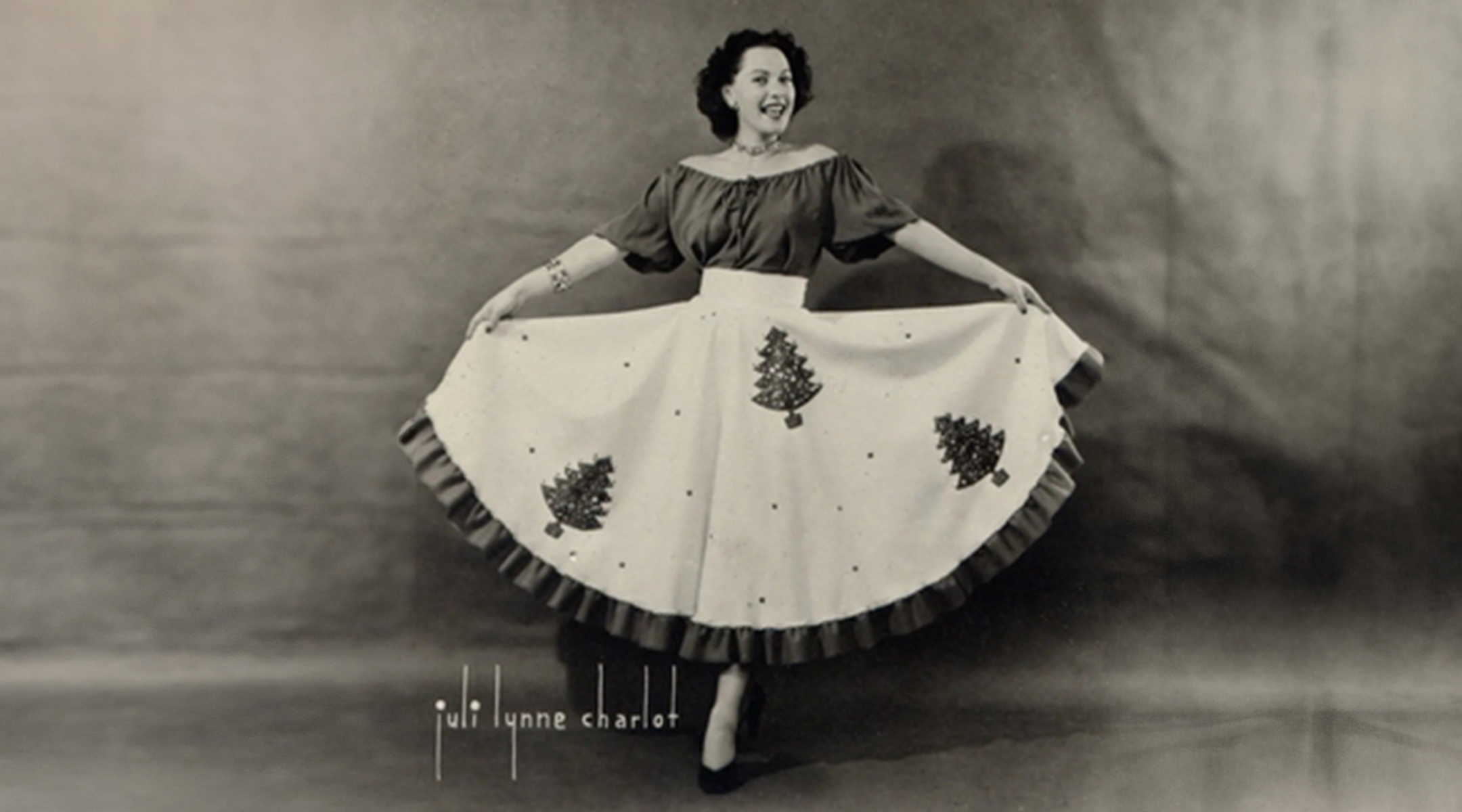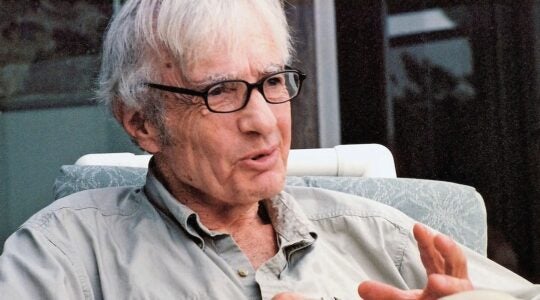This article is also available as a weekly newsletter, “Life Stories,” where we remember those who made an outsize impact in the Jewish world — or just left their community a better or more interesting place. Subscribe here to get “Life Stories” in your inbox every Tuesday.
Juli Lynne Charlot, 101, singer who invented an iconic mid-century skirt
Juli Lynne Charlot, 101, a classically trained singer who performed with the Marx Brothers and bandleader Xaviet Cugat but is best known as the inventor of the iconic mid-century poodle skirt, died March 3 at her home in Tepoztlán, Mexico.
Born Shirley Ann Agin in New York, she was married to an unemployed viscount when, in 1947, she designed a circle skirt with felt appliques, including a poodle. Teens snapped up the design at a Hollywood boutique, and Charlot was soon running a factory with 50 workers. (In a photograph of the young Princess Elizabeth, the future queen is seen wearing a Charlot design.)
Later she designed updated versions of traditional Mexican dresses at a factory in Mexico City that was destroyed in a 1985 earthquake.
Bernard L. Schwartz, 98, philanthropist and top Democratic donor

Bernard L. Schwartz was a private investor and an ardent supporter of the Democratic Party. (bernardlschwartz.com)
Bernard L. Schwartz’s German-Jewish grandfather was a “middle grade political operative” for New York City’s Democratic Party, then ensconced in the city’s notorious Tammany Hall. When he died, Tammany sent his widow “a turkey and bag of coal” every Thanksgiving and Christmas. “It made good Democrats of all of the following 5 generations,” recalled Schwartz, who grew up in Brooklyn, graduated from City College, and eventually became chairman and CEO of the Loral Corporation.
He was a top donor to Democratic causes and candidates during Bill Clinton’s presidency, and supported cultural institutions and health care in New York. “As a good capitalist I do not believe in taking from rich people to give to their less endowed classes, but we must allow the middle class and the poor greater opportunities for income growth,” he wrote. Schwartz died March 12 at his home in Manhattan. He was 98.
Gerald M. Levin, 84, broadcast pioneer who led a disastrous merger with AOL

Then Time-Warner CEO Gerald Levin speaks at a press conference, May 17, 1993. (Mark Peterson/Corbis via Getty Images)
Once described as “Jewish, frumpy and intellectual,” Gerald M. Levin didn’t fit in with the WASP-y culture at Time Inc. when he joined the legacy media company in 1972. But he revolutionized the cable TV industry in the mid-’70s when he conceived the idea of distributing HBO content to cable providers via satellite.
That and other successes catapulted him to the chairmanship of what became Time Warner and set the stage in 2000 for a disastrous merger with the internet company AOL that many blamed on the overexuberance of the dot-com era.
Earlier, Levin had been faced with personal tragedy: One of his children, Jonathan Levin, a 31-year-old high school English teacher at Taft High School in the Bronx, was murdered on May 31, 1997, during a robbery by one of his students.
After leaving the industry, Levin and his third wife moved to California where they ran Moonview Sanctuary, a “holistic healing institute” that drew in part on Levin’s interest in religion and spirituality (the native Philadelphian studied Jewish and Christian theology at Haverford College).
Levin died Wednesday at age 84.
JTA has documented Jewish history in real-time for over a century. Keep our journalism strong by joining us in supporting independent, award-winning reporting.






